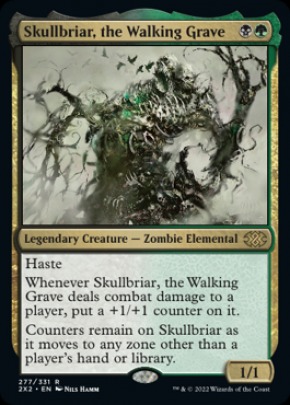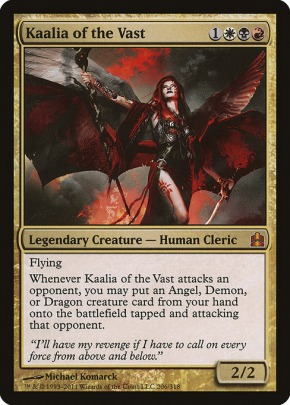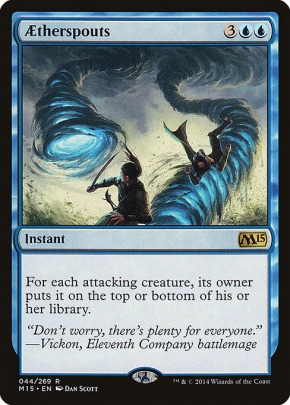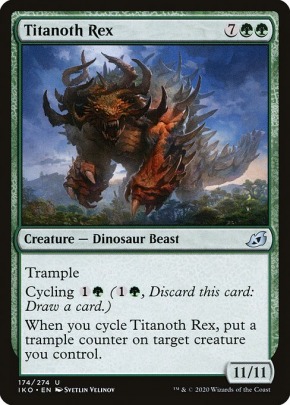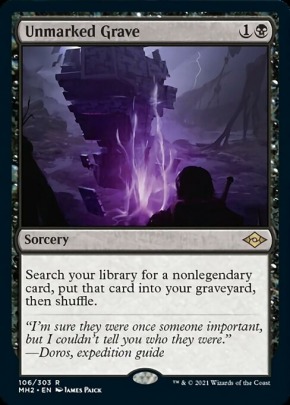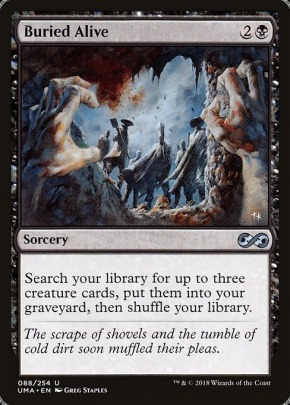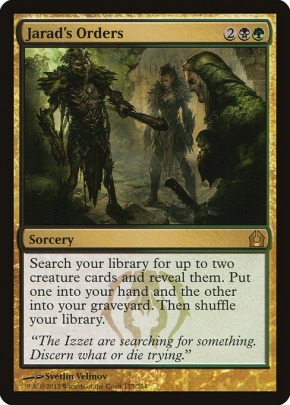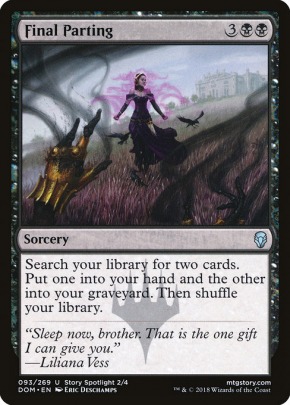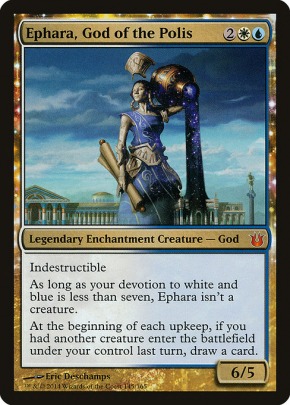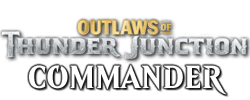Skullbriar, the Walking Grave - Voltron
"The undead monstrosity known as Skullbriar was formed when a necromancer and an elementalist entered into a grim pact.
The mages wove their magics together in an overgrown cemetery, thinking it would bring them eternal life.
Instead it fused them together into Skullbriar, the relentless, restless elemental of death."
The mages wove their magics together in an overgrown cemetery, thinking it would bring them eternal life.
Instead it fused them together into Skullbriar, the relentless, restless elemental of death."
.
.
Deck Overview
Introduction
It was the year 2011. For the first time in history, Wizard releases five preconstructed Commander decks, each containing cards and commanders destined to become format staples. And, in the midst of those very strong cards, there was a little golgari legend, specially created with the format in mind: it was innovative, interesting and potentially a lot of fun to play but, with the rules of the time, a single Unsummon would have annihilated his gameplan. So, I put it in my binder, and waited.
Thus came the year 2015. The Commander Rules Committee announced a major rules change: from now, if a Commander would be returned to its owner's library or hand, it can be moved to the Command Zone instead. That was a fundamental step forward, which made Skullbriar finally playable. But there was one last hurdle: there weren't enough cards and mechanics to effectively support the strategy. So, I put the card back into the binder, and waited again.
And finally the year 2020 came, and with it, Ikoria. A new mechanic was introduced in this expansion: the Keyword Counters. Now Skullbriar can finally receive valuable abilities as well as +1/+1 counters to take with him to the Command Zone. The time had come, the planets, aligned: Skullbriar finally emerged from the binder, more powerful than ever.
What can Skullbriar do?
Skullbriar is a little gem, the union of two enemy colors in a strategy that blends them together perfectly. The text of the card offers a perfect representation of the two different mana it is made of:


A black Zombie, interacting with different areas beyond the battlefield. As is typical of black, his creatures are useful both alive and dead (or exiled, or in the command zone).
A green Elemental, which continues to accumulate counters on itself. As is typical of green, his creatures grow without ever stopping.
These features combined, with the addition of Haste, create a legendary creature capable of posing a constant threat on the battlefield.
We can compare it to the 80s horror movies' monsters: you can escape, you can hide, you can even manage, after immense tribulations, to kill him.
But he always comes back.
Why Play Skullbriar
Strengths
- The deck starts at blazing speed, putting itself in an advantageous position while opponents are still playing ramp spells and mana rocks.
- The game plan is extremely resilient: Skullbriar's ability to not lose counters, his low mana cost, and built-in Haste make it a frustrating effort for opponents to get rid of him for a single battle step.
- Unlike almost all Golgari lists, this strategy is virtually immune to graveyard hate.
- The cards from which it draws its strength (the ones that double the +1/+1 counters and the ones that put keyword counters), are still few, so the deck is destined to get stronger and stronger as more of them are printed.
- The cards that could put this deck in trouble, like Aethersnap, see so little play that you will probably never encounter them.
Weaknesses
- This is a deck with a low blocker count. Massive armies can put us in serious trouble if we can't manage them effectively.
- The interactions in the deck are limited, so we will hardly be able to enter "control mode" against particularly interactive decks.
You might like Skullbriar if
- You like playing a cheap commander with a unique line of play.
- You like Voltron decks.
- You like the idea of attacking early and never stop.
- You like the idea of a Golgari deck without a graveyard-centric strategy.
You might dislike Skullbriar if
- You don't like commander-centric decks.
- You prefer control and combo to aggro strategy.
- You can't live without a graveyard filled with value.
- You think a deck must not contain so many tutors.
Deck Philosophy
This list of Skullbriar focuses on the speed and efficiency of his plays to put himself in a position of advantage from the beginning of the game from which it is almost impossible to oust. Efficiency and speed are given by the combination of the deck's low mana curve, the high impact of spells played in relation to the Commander, and Skullbriar's low mana value and Haste.
To be played to its full potential, this deck requires its player to focus on sequencing spells in the correct order, maximizing their effectiveness and focusing the deck's power spike early in the game.
The deck's power level, as always, isn't easy to quantify: it's a highly optimized and focused deck, but its core strategy - Voltron - isn't particularly oppressive in the format. If I were forced to assign it a number in a scale from 1 to 10 (where 9 and 10 are occupied by cEDH), I would place the deck between 7 and 8.
But in the end, it's all very relative.
.
Current Decklist

This is the list I'm playing tight now. The average mana value is different from that calculated by the tool below (2.29). Taking into account their use, I calculate the mana value of Noxious Revival as 0, Search for Tomorrow as 1, Bannerhide Krushok and Titanoth Rex as 2, and the resulting a.m.v. is 2.09.
Skullbriar, the Walking Grave - Voltron
Approximate Total Cost:
.
Cards by Function
The +1/+1 Counters
Show
Hide
The backbone of the strategy is to accumulate enough +1/+1 counters on Skullbriar to allow him to deal enough commander damage to each opponent. To do this, we have access to a selection of cards that directly add +1/+1 counters or enhance the commander's ability to place them on himself. Many of the cards in the following lists may also have this faculty, therefore listed below are those whose main purpose is to do that, as they are particularly efficient in doing so:
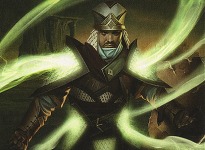
- Forced Adaptation
- Hardened Scales
- Hunger of the Howlpack
- Predatory Hunger
- Slitherhead - one single counter may seem insufficient to enter the list, but don't be fooled: it can and will make the difference in many games. Being able to put it directly in the graveyard with cards like Jarad's Orders or discard it with cards like Mask of Memory and not having to pay to activate it, make it deviously efficient (especially if there are doubling effects in the battlefield).
- Inscription of Abundance - two +1/+1 counter for two mana is an acceptable rate at instant speed, and if needed we can use it to remove a dangerous creature. Kicked, is a removal that grows our commander and heals us for a lot of hp.
- Solidarity of Heroes
- Winding Constrictor
- Branching Evolution
- Hydra's Growth
- Invigorating Surge
- Unspeakable Symbol
- Visions of Dominance
- Bannerhide Krushok - only here for the Reinforce 2 (instant speed, uncounterable, two mana/two counters rate), but can be a great blocker or even a decent attacker if needed, and the Scavenge instance can be useful, thought overcosted.
- Increasing Savagery
Protection
Show
Hide
These cards prevent the opponent from interacting effectively with the Commander, which is necessary both during the early stages of the game, when we try to accumulate as many keywords as possible on Skullbriar, and during the more advanced stages, to prevent the commander tax from becoming too burdensome:

- Cavern of Souls - uncounterable commander. No other zombies or elemental in the list, so choose your favorite.
- Tyrite Sanctum - slow and clunky, but one of the only two ways to make our Commander permanently indestructible.
- Professor's Warning - cheap protection that convert itself in a +1/+1 counter when no longer needed.
- Snakeskin Veil - cheap protection that with a +1/+1 counter as a cherry on the top.
- Canopy Cover - Hexproof with great evasion.
- Heroic Intervention
- Imp's Mischief - incredibly versatile, can redirect single target removals, counter a counterspell and more, depending on the board/pile state, and only at the price of some life loss and two mana.
- Oblivion's Hunger - replace itself, so it's never dead.
- Guardian Augmenter - protection at instant speed and can block, The +2/+2 is just icing on the cake.
- Daring Fiendbonder - the best and worst card in the deck (see the section The Fiendbonder Playability Paradox, in the Card Choice Discussion paragraph). Permanent Indestructible is our opponent's nightmare, especially in combination with Hexproof.
- Slippery Bogbonder - the second best card in the deck. Permanent Hexproof is our opponent's nightmare, especially in combination with Indestructible.
Evasion
Show
Hide
A key part of our strategy is to have our commander connect every turn. To do this, we have a small selection of cards that make it difficult or impossible to block. There are few options as usually one in game will be enough to carry out the strategy, and our tutor package make it easier to access the one best suited to the situation:
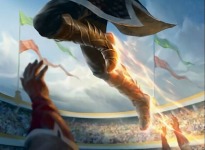
- Shizo, Death's Storehouse - fear proves effective in many more scenarios than you think. Also, the fact that it's on an untapped land and only costs two mana to activate makes this card a profit-only deal.
- Zephyr Boots - a low cost great form of evasion with built in card selection.
- Canopy Cover - the main function is protection, but basically gives Flying.
- Key to the City - Skullbriar cannot be blocked, and the discard clause can be useful sometimes.
- Titanoth Rex - instant speed, uncounterable, and permanent Trample that cantrip itself. Its only purpose in the deck is its cycling ability, we will never cast it as a creature.
- Hornbash Mentor - permanent Trample that leaves a blocker, that can put +1/+1 counters on Skullbriar.
- Filth - excellent form of evasion, especially in combination with Urborg, Tomb of Yawgmoth
Control
Show
Hide
This section houses only a few, efficient cards. We rely on tutors to find the piece we need at the right time:

- Ancient Animus - instant speed removal that grows Skullbriar, excellent.
- Assassin's Trophy
- Imp's Mischief - we can enter the counter war in Golgari colors.
- Inscription of Abundance - two +1/+1 counter for two mana is an acceptable rate at instant speed, and if needed we can use it to remove a dangerous creature. Kicked, is a removal that grows our commander and heals us for a lot of hp.
- Scavenging Ooze - one of the two graveyard hate pieces of the deck, this one has +1/+1 conters synergies and incidental lifegain at an efficient cost.
- Beast Within
- Ruinous Intrusion - this new iteration of Reclamation Sage trades a little blocker and one more mana in the cost for istant speed, exiling insted of destroying and growing our commander. An excellent deal.
- Toxic Deluge - the only wrath in the deck, is cheap and can make Skullbriar the only one standing in the battlefield, ready to stomp one opponent to death.
Card Advantage
Show
Hide
They don't seem like many, but combined with the tutors, they guarantee a constant flow of cards in our hand:

- Keen Sense - Skullbriar wants to connect with an opponent every turn, so this one cheap form of card drawing is perfect in his strategy.
- Sixth Sense - Keen Sense n°2.
- Zephyr Boots - this don't net us cards, but card selection is a form of card advantage, too. Also, is attached to an efficient form of evasion.
- Key to the City - its main function is evasion, but we can think the second ability as a "temporary clue", not great, but useful sometimes.
- Mask of Memory
- Hunter's Insight - dungerous form of card advantage, but can draw a lot of cards for the cost of Divination if we have a large Skullbriar (that is always).
- Return of the Wildspeaker
- Rishkar's Expertise
Tutors
Show
Hide
Tutors are a fundamental part of this build. They serve as the glue for the strategy, which otherwise would not have the necessary elements to function efficiently:

- Noxious Revival - not a tutor in the strict sense, but turning our next draw into a card we already binned is the closest thing to a second Vampiric Tutor we can found, and can be cast for free.
- Crop Rotation - this bad boy is a cheap, instant speed access to a little toolbox of utility lands, able to direct the game exactly where we want, when we want.
- Green Sun's Zenith - its main role is ramp, but can be a fairly versatile tutor.
- Vampiric Tutor
- Demonic Tutor|UMA
- Entomb - Daring Fiendbonder n°2. Its main role is to enable turn 3 Indestructibility, but can also grab other cards, like evasion.
- Unmarked Grave - Daring Fiendbonder n°3. Its main role is to enable turn 3/4 Indestructibility, but can also grab other cards, like evasion.
- Buried Alive - Daring Fiendbonder n°4. It enable turn 4/5 Indestructibility, evasion, and a +1/+1 counter in a single shot.
- Jarad's Orders - Daring Fiendbonder n°5. No mana discount, but cycle itself (tutoring a creature card).
- Final Parting - Daring Fiendbonder n°6. One mana more, but you can tutor any other card you need.
Lifelink
Show
Hide
This deck does not play a lot of creatures, so, in crowded boards, we can't be able to properly defend our life points. Yes, some cards in the deck allow you to gain life, but only two of the them are capable to make Skullbriar a reliable source of life gain, keeping us alive during our race to victory:

- Unexpected Fangs - instant speed and with a bonus +1/+1 counter.
- Duskfang Mentor - can block and can make +1/+1 counters at a reasonable price.
Ramp
Show
Hide
Only one mana value or less ramp is necessary for this list to function properly. We need to save even the smallest bit of mana in order to cast multiple spells every turn cicle, to protect and boost Skullbriar:

- Mox Amber
- Arbor Elf
- Birds of Paradise
- Elves of Deep Shadow
- Elvish Mystic
- Fyndhorn Elves
- Green Sun's Zenith - search for the dryad.
- Llanowar Elves
- Wild Growth|C18
- Ordeal of Nylea - the only 2 mana ramp, but give +1/+1 counters to our commander and ramp two lands.
- Search for Tomorrow - the key is the turn 1 suspend cast, it will happen very rarely to pay the full cost, if never.
Utility Lands
Show
Hide
On our manabase, we have a selection of lands with powerful effects, which we have access to at instant speed thanks to Crop Rotation:

- Bojuka Bog - the only tapped land in the list, being an uncounterable piece of graveyard hate compensates the tempo loss.
- Cavern of Souls - uncounterable commander. No other zombies or elementals in the list, so choose your favorite.
- Dryad Arbor - 1 mana ramp and fetchable anti-edict tech. Too good to pass, even considering the summoning sickness.
- Homeward Path - Control Magic effects are one of the Walking Grave great weakness.
- Shizo, Death's Storehouse - very cheap and efficient form of evasion on an untapped land.
- Tyrite Sanctum - slow and clunky, but one of the only two ways to make our Commander permanently indestructible.
- Urborg, Tomb of Yawgmoth - mana fixing that make Skullbriar always unblockable in conjunction with Filth.
Manabase
Show
Hide
Untapped duals, fetchlands and good, old basics are the backbone of this deck. We need the fastest possible start, and a tapped land turn one/two can make the difference between victory and defeat:

.
Budget Considerations
Budget Replacements
Show
Hide
- Tutors (Entomb, Noxious Revival, Vampiric Tutor, Demonic Tutor|UMA).
- Fast Ramp (Mox Amber, Birds of Paradise, Green Sun's Zenith).
- Utility Lands (Cavern of Souls, Dryad Arbor, Homeward Path, Shizo, Death's Storehouse, Urborg, Tomb of Yawgmoth).
- Color Fixing (Bloodstained Mire, Blooming Marsh, Marsh Flats, Misty Rainforest, Nurturing Peatland, Overgrown Tomb, Polluted Delta, Verdant Catacombs, Windswept Heath, Wooded Foothills).
- Cheap Card Draw (Night's Whisper, Snake Umbra).
- Budget Tutor (Vile Entomber).
- Ramp (Rampant Growth|CMR, Sakura-Tribe Elder).
- Basic Lands.
- Veil of Summer= Autumn's Veil.
- Noxious Revival= Regrowth.
- Assassin's Trophy= Windgrace's Judgment.
- Imp's Mischief= Alpha Authority.
- Branching Evolution= Corpsejack Menace.
- Toxic Deluge= Finality.
Now the updated budget list:
.
Deck Strategy
Introduction
Its line of play is very reminiscent of the Bogles deck, renowned in both Modern and Pauper: we play a single threat, we make it huge and non-interactive, and we unleash it on our enemies.
But this deck, unlike the 1vs1 ones, is not based on Auras, but on counters, thanks to Skullbriar, the Walking Grave's unique ability to keep counters on itself even if it leaves the battlefield.
We are therefore an aggressive deck, with a proactive and well-tested plan. We will attack with our commander whenever possible, but while in a 1vs1 game this would be normal routine, in multiplayer there is a social and psychological component, which we must always keep in mind, to avoid becoming the archenemy. So:
Who should I attack?
Show
Hide
In a game of EDH, the perception our opponents have of us is just as important as the threat we actually pose.
Many players solve this by using gimmicks that reduce the perception of the danger they represent, and one of them is to randomly choose the player to target with their attacks. While it's generally a great method, it's a bad idea in this deck.
Our commander is constantly growing, and it only takes 21 damage to take a player out of the game. Therefore, it only takes a few unfortunate dice rolls to get killed, so what our opponents will think will be: "I have to remove that threat immediately, because I don't want to take the risk of losing." So, what's the solution?
So, what's the solution?
In this deck, to balance the level of threat we place against all opponents, we always choose to attack the player with the least commander damage.
We look less dangerous if our opponent knows he doesn't have to expect an attack next turn (or knows he does), and we can also openly state this line of play to make sure it's understood. Of course, we can change this line of play if the boardstate requires it, but it is still the best approach to this type of strategy. In addition, it has a positive effect on the timing of the game, as it allows us to reach a situation where we can eliminate our opponents one after the other, instead of focusing only on one, eliminating they, excluding they from the game for who knows how long, and then passing to the next.
Many players solve this by using gimmicks that reduce the perception of the danger they represent, and one of them is to randomly choose the player to target with their attacks. While it's generally a great method, it's a bad idea in this deck.
Our commander is constantly growing, and it only takes 21 damage to take a player out of the game. Therefore, it only takes a few unfortunate dice rolls to get killed, so what our opponents will think will be: "I have to remove that threat immediately, because I don't want to take the risk of losing."
In this deck, to balance the level of threat we place against all opponents, we always choose to attack the player with the least commander damage.
We look less dangerous if our opponent knows he doesn't have to expect an attack next turn (or knows he does), and we can also openly state this line of play to make sure it's understood. Of course, we can change this line of play if the boardstate requires it, but it is still the best approach to this type of strategy. In addition, it has a positive effect on the timing of the game, as it allows us to reach a situation where we can eliminate our opponents one after the other, instead of focusing only on one, eliminating they, excluding they from the game for who knows how long, and then passing to the next.
Starting Hands and Mulligans
This is a deck that aims to play fast, and the opening hand is the starting point for that. In it we look for these things:
- At least two lands that can give us the combination of and (so we can be sure we can play Skullbriar on the second turn). A third source of mana is a welcome but unnecessary addition, and a ramp spell is better than a land.
- At least one low-cost card advantage spell or tutor.
Situations where we should strongly consider a mulligan instead:
- Hand with only high cost spells (duh).
- Sources of mana of only one color (double duh).
- No form of protection and cheap card advantage and/or tutors.
- There is Daring Fiendbonder (see the section The Fiendbonder Playability Paradox for further explanation). We can instead consider holding the hand if along with it we also have a way to discard it (like Zephyr Boots, Key to the City, etc.).
Early Game Strategy
Early game is a particularly crucial phase for this deck. For this reason, I prefer to divide it into two further phases: Early-Early Game and Late-Early Game.
Early-Early Game (EEG): it consists of first and second turn, and the choices at this stage are pretty much the same in every game:
- Turn One: land, one mana ramp or other one mana utility, or land, pass;
- Turn Two: play Skullbriar or, if ramped in turn one, play Skullbriar, than play one mana spell (like tutors, card draw, other ramp) or hold mana for interaction.
- Protection: our top priority, and in the ideal game, we spend the LEG playing Daring Fiendbonder and Slippery Bogbonder, turning our commander into an unsolvable threat, but other cards can fill the role temporarily (like Guardian Augmenter);
- Tutoring and Card Draw: if we cannot spend the LEG playing our protections, we must use this phase to find them, giving top priority to tutors and playing only after or in the absence of these our card draw spells. In the exceptional case in which the commander is already fully protected at this stage, our tutors will be used to fill in the other holes in the strategy. The priority depends on the state of the board, but in general you can follow the order of the rest of this list, starting with the card advantage and following;
- Evasion: in the Early Game, being able to hit one player with the commander shouldn't be a problem, as it is very unlikely that all the other players have blockers, but in the following turns it will be almost a certainty. Therefore, making Skullbriar difficult or impossible to block must become one of our top three priorities in the LEG.
- Counters: our main goal, as well as our win condition, is to make a gargantuan Skullbriar, so we must help him. Here too there is a strict hierarchy: we want to play the cards that gradually add counters first (Forced Adaptation, Predatory Hunger, Winding Constrictor, etc.), then the cards that add a fair amount of counters in one hit (Hunger of the Howlpack, Bannerhide Krushok, Increasing Savagery, etc.), and finally the cards that double the counters (Solidarity of Heroes, Visions of Dominance, Hydra's Growth, etc.). This sequencing ensures that we get the maximum amount of counters from our cards.
- Control: it is very difficult for this to happen at this stage of the game, but some opponents could put something on the battlefield that interferes with our game plan. In this case, thanks to a small but varied selection of removals, we can remove the obstacle and continue on our way.
- Lifelink: in this deck, the blockers are few and the life-draining spells are many, so recovering some life points will sometimes be necessary to allow us to get to victory alive. So, if all the other goals on this list have been completed, or if none of them can be achieved, or if the boardstate requires it, we can proceed to give our commander lifelink.
Now we can finally proceed to the Mid-Game.
Mid-Game Strategy
Welcome to turn 5-8 of the game.
In the previous 4 turns, we have laid the foundations of our game plan. At this stage, we're going to develop that plan, and it's a really simple one: have your commander punch your opponents in the face until you are the only one standing.
To do this, Skullbriar has to get very big, and even though he already has the ability to grow, he still needs a little push. For this purpose, the deck has a rich selection of spells capable of putting +1/+1 counters on it, in 3 different ways:
- Slowly adding the counters (Forced Adaptation, Hardened Scales, Predatory Hunger,Winding Constrictor, Branching Evolution). They must be played before other types of +1/+1 counters cards, as they work slowly, and as they interact with Skullbriar's ability triggered by combat damage, they should be played before attacking, if possible;
- Placing a certain amount of counters in one shot (Hunger of the Howlpack, Slitherhead, Inscription of Abundance, Unspeakable Symbol, Bannerhide Krushok, Increasing Savagery). Ideally, they must be played after the cards that increase the counters placed on the commander, like Hardened Scales, to maximize its effectiveness;
- Doubling the tokens on the commander (Solidarity of Heroes, Hydra's Growth, Invigorating Surge, Visions of Dominance). They should be played last, to double as many counters as possible. Little advice: if you have in hand one of the doubling spell which also add a +1/+1 counter and Solidarity of Heroes, Solidarity of Heroes must be played last. Why? Simple math.
Assuming you start with a Skullbriar with 10 counters, let's see what happens when you play Solidarity of Heroes first: 10 counters x 2 = 20, then the second spell, 20 counters +1 = 21, doubled = 42.
Now we assume playing Solidarity of Heroes last: the fisrt spell resolves, so 10 +1 = 11, doubled 22, and then 22 x 2= 44.
Now, the difference between 42 and 44 might seem negligible, but remember that boardstates, especially in EDH, can be very varied, and trampling over eleven 2/2 can result in defeat in one of the cases. So, try to always play efficiently, and the deck will always reward you.
Of course, as we continue our game plan, we can rest assured that our opponents will do the same. So, in addition to making our commander big, we also try to fill any gaps in our strategy (for example, looking for forms of protection or evasion in case we were not able to do it in the Early Game), and to resolve adverse boardstates (like wiping the out-of-control token player, removing a key piece from the combo player, or emptying the reanimator player's graveyard).
Additionally, opponents may actively try to obstruct our game plan, for example by preventing us from playing our protections, or trying to kill Skullbriar by bypassing them. Well, in that case, let's just play Skullbriar again. The fun part of this commander is just this: even if you somehow manage to remove him, he will come back as dangerous as before.
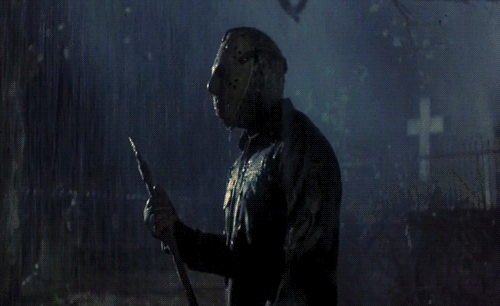
Late Game
By the ninth round, we may already have reached 21 commander damage with all three of our opponents. Well done! Now shuffle the deck and start over!
Otherwise, the situation at this point should be more or less this: we have a gigantic and unmanageable commander, the opponents all one shot from defeat or maybe someone already out.
Our hand should be pretty full, and maybe our life points too. In this case we should be within a few turns of winning.
What if this is not the case? Our opponents could suddenly overwhelm us with a flood of creatures, or drain us to death, or mill us, or close the game with an unexpected combo. Well, welcome to multiplayer Magic, where in every game we have a 75% chance of losing! The important thing is that we played as best as we could, and that we and the opponents had fun!
So, again: Well done! Now shuffle the deck and start over!
.
Card Choice Discussion
The Fiendbonder Playability Paradox
Show
Hide

Because it is also a terrible card: having it in the starting hand is a valid reason to consider a mulligan, during the game is a bad draw.
Playing it fairly is clunky: has Haste and must attack each turn if able, so we can't keep it as a blocker to bin it without sac outlets (except for a turn cycle), and the opponents can just take 5 instead of giving us the grace to kill him for us or, worst case scenario, they can exile it.
And beyond all these tribulations, it costs to play it and pay for its activation.
To avoid this madness, in addition to playing some accidental discard outlets, five "alternative fiendbonders" appear in the list, each one being better than the original. In addition to bypassing the problem of effectively reaching the graveyard, each of them has bonuses that make it more interesting than the original card:
Entomb - cost Fiendbonder. Makes possible enabling turn 3 indestructibility.
Unmarked Grave - cost Fiendbonder. Makes possible enabling turn 3/4 indestructibility.
Buried Alive - cost Fiendbonder. It enables turn 4/5 Indestructibility, evasion, and a +1/+1 counter in a single shot.
Jarad's Orders - cost Fiendbonder. Same mana value, but the additional translates in including an Eladamri's Call.
Final Parting - cost Fiendbonder. One more mana, but the additional translates in including a Demonic Tutor|UMA.
Notable Inclusions
Show
Hide
- Noxious Revival: fixing the next draw for free is great, but this card also has the ability to interrupt your opponent's play, for example by placing on top of the library a card targeted by one of his reanimation or recycling spells. Interestingly, it's also the only way in the deck to save Skullbriar if -1/-1 counters are placed on it.
- Unspeakable Symbol: 3 hp seems like a lot, but the versatility of being able to activate it at instant speed and as many times as we want makes up for it, especially if there are some friends on the battlefield.
Notable Exclusions
Show
Hide
- Corpsejack Menace, Forgotten Ancient: they are slightly too expensive and fragile for this list, which aims to be as fast and efficient as possible, but they may come back in the future, because they are still great cards.
- Kalonian Hydra: very strong, but slow. We have to wait one full turn cycle before the doubling effect, and we can't afford it.
- Blood Curdle, Call of the Death-Dweller, Void Beckoner: menace is not a great evasion ability, especially in EDH, and deathtouch, in a deck with only one massive attacker, is not very relevant, but even so I would have considered Void Beckoner if the cycling cost were one mana cheaper, like his trampling rival.
- Rancor: Hornbash Mentor and Titanoth Rex are simply better with Skullbriar, and two cards that grant Trample are enough.
- Primeval Bounty: great on slower decks, trying accumulate advantage in the late game, but on this list it's just too slow.
- Sol Ring: colorless mana acceleration, but we are hungry for colored mana.
- The Ozolith: auto include in lists with a lot of creatures with +1/+1 counters' synergies, proliferate, etc, where The Ozolith would transfer their counters to Skullbriar before attack. In this particular list, however, we have no other creatures with counters and counters' synergies, and we try to protect Skullbriar so that he dies as less often as possible, thereby making the trigger on death of The Ozolith useless. I therefore decided to exclude it as superfluous to the completion of the strategy of this deck.
- Ring of Kalonia, Ring of Xathrid: replaced with cards more efficient at producing +1/+1 counters and with better/cheaper abilities.
- Command Beacon - In a so commander-dependant deck this is generally a staple, so, why not here? Sadly it says "into your hand", and that's a nonbo with Skullbriar.
- Forge of Heroes, Guildmages' Forum, Karn's Bastion, Llanowar Reborn, Mosswort Bridge, Opal Palace, Oran-Rief, the Vastwood, Rogue's Passage: a long list of utility lands. They are fine, but the early game is super important in this deck, so no tapped lands, no mana-neutral lands, no colorless, and no overcosted abilities.
.
Credit & Thanks
.
Change Log
24/09/2021
Show
Hide

